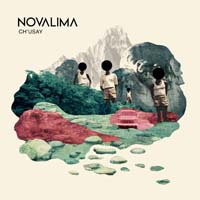
NOVALIMA
CH'USAY (Wonderwheel)
Novalima took two years off from touring to craft a new album and the result is superb. They started off at the dawn of the internet 15 years ago as a file-sharing enterprise, sourcing musical ideas from different countries but bringing them all to their own Afro-Peruvian roots. Now onto their fourth album, Novalima is an established monument in both mainstream media and international festivals as well as their underground club roots which keep them real. They have brought up other musicians, an Andean soprano, Sylvia Falcon who adds a bit of the Yma Sumac eeriness, and a Quechua rapper, Liberato Kani, who now join the fray. (The rapping is not as objectionable as I feared, in fact it fits in fine. The title is Quechua for "Voyage.") Their music is hard to describe: not only have they modernized the music of Black Peru, they have added the dubby studio effects we find in Quantic and other Colombia producers, so there is definitely a pan-South American groove at work here. Yet they can still bring it down to the cajon and jawbone of an ass percussion with vocals. As the saying goes, they've got soul. Other guests include a Colombian marimba master and Kumar, a Cuban rapper based in Barcelona. It will be familiar to fans of the previous albums, but they've added new layers of complexity to their sound.
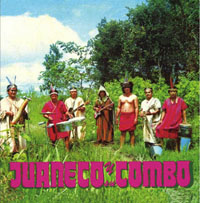
JUANECO Y SU COMBO
THE BIRTH OF JUNGLE CUMBIA (TheVitalRecord.com)
When I was in Peru in 1979 all I recall hearing was Western pop -- Sting & the Police sang "Roxanne" over a badly tuned radio coming out of the lonely tannoy atop a flagpole in a town square at twilight. I didn't know any Spanish. The jungle cumbia sound of Los Wemblers and Juaneco y su Combo had not penetrated to the big city as far as I was aware. Peru's Amazon region was still the Wild West and my planned trip there was cut short by my inexperience as a globe trotter. Lima was an edgy place; I did not let my guard down until I got to Cusco, which is where I was robbed of my camera by a light-fingered kid in a park, & my travelers' checks by a shifty hotel clerk who crept into my room in the middle of the night. This pretty much ruined my experience, along with strangers coming up to me and asking if I, a gringo with glasses, was Woody Allen. Funny, people in England often took me for another well-known pervert Rolf Harris. But enough about me. The successful Roots of Chicha compilation led to a lot of reissues, and even a Chicha cover band. So this is the second Juaneco compilation I have come across, however there are only two tracks in common with the previous one (issued by Barbès in 2008). Going back to their earliest albums, released in 1970 and 1972, James Tuesta has restored what was great about this band: it is raw, and like the label promises, vital. I really enjoy the tropical one-drop on the bongos, or the galloping ride cymbal, along with acid-etched electric guitar and the world-weary Farfisa organ warbling away in the background. There's also an elaborate booklet which explains the lyrics and context of the songs.
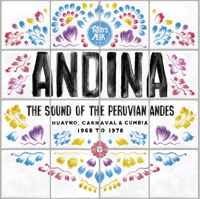
ANDINA: THE SOUND OF THE PERUVIAN ANDES 1968-78 (Tiger's Milk Records TIGMOO6LP)
In the last decade Barbès Records (The Roots of Chicha, 2007) and others have rediscovered the psychedelic Amazonian cumbia music of Peru. The suggestion of this album is that there was another golden era of Andean music that the world forgot about and this disc mainly focuses further south on the Andes mountains, that form the spine of the country, and the Huayno, Carnaval and Cumbia heard thereon. The psychedelic stuff is represented here by Los Walkers and Los Bilbao with the familiar swirling guitar and organ. I was in Peru in 1979 and all I recall was the awful "El condor pasa" pan pipes which not only haunted the tourist sites there but then years later I'd turn a corner in Cambridge, England, or Paris, France and there would be the wooly perpetrators busking on their reedy flutes. Fortunately there's none of that alpaca-clad nonsense here, but some rustic bands (16 of them in all) with names like Los Bárbaros del Centro (the downtown barbarians) or the untranslatable Los Jelwees. The Tourists from Mantaro -- Los Turistas del Mantaro -- have a lively cumbia turn with dueling clarinets over bass and percussion and "conversational" vocalists calling the odds. Rough and ready, this is a nice mix and worth delving into.
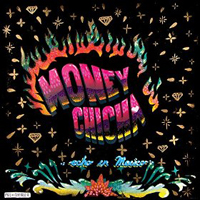
MONEY CHICHA
ECHO EN MEXICO (Vampisoul)
First there was Chicha Libre from Brooklyn and now we have Money Chicha so it seems like this historical style is no longer a novelty for the retrocurious deejay but a full-blown revival. And a good thing too! There's a lot to be said for electro-cumbia with psychedelic overtones. The newest contender is an Austin Texas-based remix of members of Grupo Fantasma and the funk band Brownout, both of whom have impressed us. Driven by congas, cowbell and timbales we get a cheesy fondu of old synths, electric organs and effects-laden guitars that is both danceable and melodically delicious. The period from 1966 to the mid 70s was a great one for music globally and this proves there's more to investigate than R&B and James Brown covers. This is a great album and I have it in heavy rotation, because of the variety of approaches and diversity of sounds, it's a really fine effort.
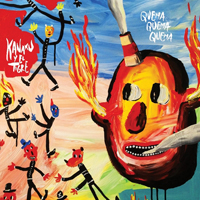
KANAKU Y EL TIGRE
QUEMA QUEMA QUEMA (Strut 130CD)
An album of wistful pop that grows on you, it is the brainchild of the duo Nico Saba and Bruno Bellatin, a couple of Peruvians who have spent two years in their studio in Lima working on their second album, which translates as "Burn, Burn, Burn." They met as teens in a punk band and, despite having completely opposite tastes in music, have worked together successfully for a decade or more, in the UK and US as well as Peru. The harmonies are great, there is a pleasant quirkiness to the whole thing. Haunted slide guitar and mandolins, big-room echo and a relaxed acoustic bass walk us through their dreamscape. Their sound has been described as psychedelic folk, and that may be true, but it shows a sophisticated use of various styles and well-considered use of electronic touches with more conventional instrumentation to the fore. It's a very well crafted album and if they don't turn out to be the Lennon and McCartney of the 21st century it wont be through lack of talent.
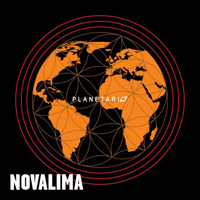
NOVALIMA
PLANETARIO ( Wonderwheel Recordings CD26)
Novalima are on a roll. This is their latest exposition of Afro-Peruvian roots music and it is superb (as are their previous pair of albums). They use electronics sparingly, so it's mainly the thrust of traditional percussion with call and response vocals and a heavy bass. But the electronics give it a modern edge and attract folks who would get bored with just timbales, cowbell, guiro, cajon and other traditional percussion. Afro-Peruvian music was pretty marginalized in South America until 20 years or so ago (when now Minister of Culture Susana Baca appeared) and now it is one of Peru's best musical exports and Novalima are the ambassadors. They are even headlining a centenary celebration of the music later this year. There are three guys who all contribute programming with synth, synth bass and even a Moog which is turned on for the Sub Phatty effect in two tracks. That's old school. There's a passel of guests dropping in, including a trombone on four tracks, a violin, and the singer of Sidestepper, Eka Muñoz, sings on two very Sidestepperish tracks. Milagros Guerrero is Novalima's own lead singer and has the appropriate grit in her delivery to match the rasp of guiro and shekere. The cajon player, Marcos Mosquera, also sings on a few tracks for variety. They throw echo onto the vocals occasionally to add a dubby quality. The album is called Planetario because they have been touring the world for the past couple of years promoting their rich confident sound. They had a productive spell in Colombia, collaborating with Sidestepper and also members of a group called Las-33. In Spain they hooked up with some of the Ojos de Brujo gang. They are simply a stupendously great live act and you feel that coming through in their albums.
CHICHA LIBRE
CUATRO TIGRES (Barbès Records)
It's nice to see some bands escaping the tyranny of the CD's length. Lenine's last album was a relaxed 28 minutes, and now Chicha Libre have returned to another format -- the EP -- which is sometimes the right space for listening to a band or a sound. I think the original length of 72 minutes for CDs was determined by the length of a symphony of Mahler that someone felt should be heard complete in one go. In the 78 RPM days you would have a pancake stack of black shellac dropping down on your turntable in order to hear a long work in parts. These four songs are wonderful and I do wish there was more to this issue, however I am happy with what I've been given. On this outing the New York-based band supplies the psychedelic Peruvian cumbia treatment to four gringo compositions: "Guns of Brixton," "Rica Chicha," "Alone again," (Gracias a Dios, not the Gilbert O'Sullivan one, but a song by Arthur Lee & Love) and the Simpson's theme by Danny Elfman. If you don't have a Victrola you can always download the album, er, EP.
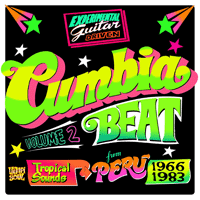
CUMBIA BEAT VOL 2
TROPICAL SOUNDS FROM PERU 1966 1983 (VampiSoul 143CD)
This is the music which has become known as Chicha. I've written about the previous compilations on the Barbès label called Roots of Chicha. If you liked those, here's more of the goods, including Los Destellos, Juaneco, and Los Mirlos, who were part of the previous anthologies. It's psychedelic cumbia: the instrumentals are very engaging and make you smile and bop about; the songs are lyrical, "con feeling." Though there are different bands, and several newcomers to our ears, the music is consistently good, with reverb, echoey guitar leads, bongos and catchy ditties, as the beat goes on. Los Ecos, Compay Quinto and Manzanita are all exceptional. The hooks are great from the very start (Manzanita's "Mi choza, mi chacra y mi mujer [My hut, my farm and my wife]"), right through Los Pecos' "Cumbia para un Viejito," which I guess means cumbia for a little old man. It has querulous guitar over wobbly bongos and lopsided congas: really catchy. Is Los Ecos' "SOS... Peligro" a Four Tops cover? Is that Shocking Blue I hear lurking behind Grupo Celeste's "Sin exito"? Otherwise, the influence of Santana is evident. But there are other influences too: Dick Dale, Ten Years After, Chet Atkins, you name it. In fact trying to name it will leave you puzzled as there are many vaguely familiar riffs, all filtered through a Peruvian jukebox deep in the jungle, swirling in a heady mix of Leslie speakers, Farfisa organ, sax, wah wah and sustain. It's corny and lush and swivels erratically between genres, like some weird cocktail with a kick in the gullet called ayahuasca that will make your head spin, to say the least. (Be polite but do not drink it!) On disc two, Los Ilusionistas do a creditable cover of "Colegiala," but other than Juaneco (i.e. Juan Wong and his psychedelic Farfisa) all the acts are new to my ears. One or two of the tracks seem to have been taken from 45s rather than studio tapes, but that just lends an aura of authenticity. It's just as good as the previous compilations, and a welcome expansion of the collection of Peruvian tropical pop.
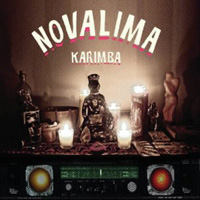
NOVALIMA
KARIMBA (ESL 190)
With seemingly boundless energy Novalima have found time out from their busy touring schedule to record another superb album. From performing they've adapted some live dubbing that works well on disc. The album opens with a synthesized pulse which soon is pushed back by vocals and drumming. It's a traditional song, "Festejo," but they create a completely new feeling for it with the risky arrangement, including the synth which interjects some raggedy farting sounds, however there's a great sustained guitar part that has been looped for a hypnotic drone. The next cut romps along and because of the flawless sequencing seems to invert itself into a dub but that is actually the intro to a third track. Novalima have gone from strength to strength. Their Coba Coba was one of my top albums from 2009 and I attributed their success to the production, but they have now absorbed all the studio tricks into their performance as well as the Latin influences that I saw floating through their sound then, to create a new Pan-American groove. It's still got the "Soul of Black Peru" which surfaces in tracks like "Revolucion," but it also expands into Cumbia and Dub styles. "Macaco (remix)" is outstanding and I have already seen another mix of it on the Faraon Bantu Sound System album from Palenque Records.
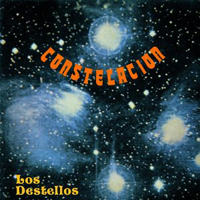
LOS DESTELLOS
CONSTELACION (Secret Stash)
One of the popular Peruvian Cumbia bands from the recent Chicha craze return in a limited way, with a vinyl remastering of their highly sought first album which is probably sold out by now (Update, the purple vinyl is gone, regular black vinyl still available from Secret Stash website). This music which became a craze in the 60s is not airy fairy pipes of pan guff, nor the Peru Negra stuff from Lima, but shit-kicking "country" music from the jungles and mining camps. Enrique Delgado, leader of Los Destellos was instrumental in bringing together surf guitar, funk and rock rhythms, with cumbia and indigenous sounds to create this light party music. I wont say it's infectious, because you are supposed to get inoculated before you travel, but you will be transported to some weary dusty roadside dive with a little too much cerveza in you. The band are wearing matching purple blazers and black bell-bottoms and some of them even have shades on though it's dim enough in there, but the guitarist presses his fuzztone pedal and suddenly lights explode in your skull. No, it's not Santana in the Fillmore but the home-grown equivalent, "Onsta la Yerbita." Funny thing is once the psychedelic daze wears off, we can sort of hear Henry Mancini underneath it all. Here you can see them on Peruvian TV performing "Elsa," which was on Roots of Chicha.
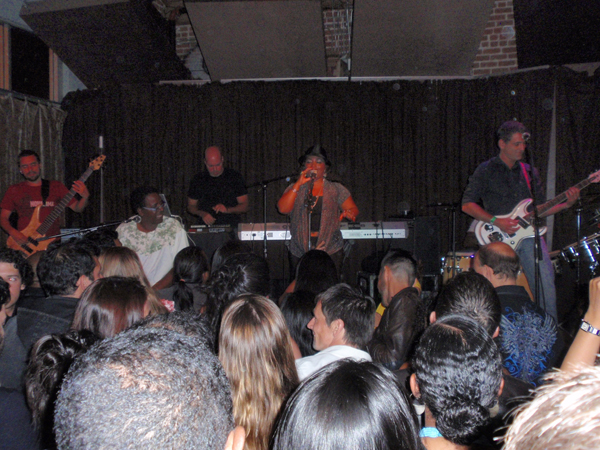
IN CONCERT
NOVA LIMA @ BRICK & MORTAR MUSICAL HALL, SAN FRANCISCO, 25 JUNE 2011
Here's a band that has gone from strength to strength. Their new album is due out in a few weeks and they are currently jetting around the world, rocking the audiences with their energetic version of the music of Black Peru. It was my first visit to the Brick & Mortar Music Hall in San Francisco's Mission District. Mexico's footballers had just beaten the USA 4-2 in the Copa de Oro final, so the neighbourhood was in a festive mood. The club is small and the drinks were flowing. In its former incarnation, during the dot com boom, the owner regularly comped $5000 worth of drinks per night, to create a buzz! My friends offered to buy me a Big Daddy but, sensing it might be a long night, I settled for a cerveza. The opening act was loud and seemed to have been listening to Roots of Chicha, but apart from a cumbia and a reggae number it was mostly just energetic noise. After they vacated the stage we scuttled into a space closer in while the DJ played a downtempo samba album that seemed to consist of one bar of "Girl from Ipanema" in a loop. But we were soon treated to the Afro-Peruvian onslaught from the main attraction. Novalima did perform some traditional numbers, like "Zamba Malato" and "Zamba Landó," but mainly gave us a retrospective of their hits, including the incendiary "Coba Guarango." Lead singer Milagros Guerrero had a great time and got the audience fired up, while the irrepressibly perky Cotito on cajón made his yelps of delight and drove the rhythm. He even got out the "jawbone of an ass" -- as used by Samson (Judges 15:16) -- for "Machete." There was a performer with a laptop who also seemed to run reverb and echo chamber on the guitars and drums to give the sound greater dimension and flexibility. Things got so hot I had to retreat to the back of the room where I found a space at a table with some even-older-than-me Peruvian grannies, who had come to see, presumably, their relatives onstage. The show ended at 1:30 a.m., a complete triumph. Brick & Mortar is a far better space to hear music than Yoshi's so I hope they book more acts of this calibre in future.
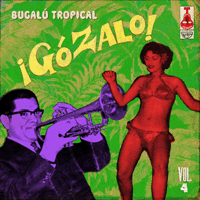
¡GOZALO! VOL 4
BUGALU TROPICAL (Vampisoul VAMPICD127)
Recently the Duchess asked me to make her a compilation of Lecuona's song "Siboney," so I dug through my LP shelves and found some great and some obscure versions (ever hear of Armando Orefiche?). Anyway I am not surprised when others enthusiastically delve into areas of music and find neglected gems. This is Vampisoul's fourth foray into tropical music of Peru of the 60s. It's the first I've heard and I have to say it's great. I think the only artists on here I had heard of are singer Melcochita and pianist Alfredo Linares, but there are 28 packed solid tracks. Descargas, boogaloos, guajiras: take your pick from a whole panoply of hispanic delights from groups like Carlos Pickling y Orquesta or Los Hilton's. Many standout tracks here, including acid guitar on a cumbia "Aguanile" by Los Girasoles, which reminds me of "Coco Mai mai." Joe di Roma y su Orquesta give us a tour of familiar mambos and cha-chas called "Boogaloo Boogaloo," in a pleasantly dated big band style. Like the Chicha sound which occurred at the same time, the Peruvians adapted Cuban rhythms, but also left room for the Colombian cumbias to come in and made the Bugalú their own.
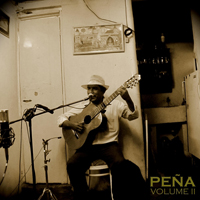
PENA VOL II (Secret Stash)
This is a compilation of contemporary Afro-Peruvian roots music. I played the lead-off cut to a Peruvian friend and her reaction was that it sounded like Susana Baca, with more passion. It leans to the acoustic, and even includes a version of "El Condor pasa" that is not tongue in cheek, but at least it doesn't feature pan pipes. The ensemble was put together in Lima last year by producer Cory Wong who released Peña vol 1 a year ago in a cigar box with lavish booklet. But he has gone from one extreme to the other. This time out he opts for a download only, which is a lot easier to lose down the back of the couch. His further excavations from the sessions are interesting. My problem is I can't review something that says Track 01, Track 02, etc. The instruments are primarily acoustic guitar, electric bass, & rumba box (cajon) and the vocals are heartfelt. Track 2 good instrumental; track 5 impassioned singer. There's a video sampler here. If this doesn't do it for you there's Soviet Funk and Porno Soundtrack comps on the Secret Stash website!
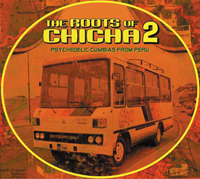
ROOTS OF CHICHA 2
MORE PSYCHEDELIC CUMBIAS FROM PERU (Barbès Records)
You liked the first volume in the series, three years ago, remember? Well, now here's more to tickle your fancy. To recap: In the 60s these Peruvian bands heard Cumbia music from Colombia. They liked the loping beat and hybridized it with electric rock, which was then in psychedelic mode. They added old standby Cuban guaracha and bits of their own folkloric music. The result was a gutter ball, rather than a glitter ball, that missed the mainstream. Spurned by the middle classes and the Peruvian hipsters, it took root in the slums of Lima where Andean workers arrived. The 2007 release was praised for creating a bridge back to the rock and Latin music of the late 60s that had been overlooked in the constant cultural back-hoeing of our collective past, looking for obscure nuggets. And the success of volume one prompted Barbès to return for another dose of 11 (different) bands and 16 tracks, taking a new approach to show the sophisticated rather than the wild side of the music. It also brings in some of the Cuban-influenced sounds that helped shape the music early on, and comes up to the later Andean sound that defined Chicha at its height. This sequel is a diverse and engaging collection. It's not at all strange and "Colegiala" by Los Illusionistas is one well-known cumbia that I have heard before. "Agua" by Manzanita y su Conjunto reminds me of prime Santana: for a total obscurity this is pretty amazing. In the first disc we had a wild take on "Für Elise;" this time we get a twangy guitar rendering of "Siboney." This music also had an impact in Mexico, but most significantly the previous compilation from Barbès led to a revival in the homeland and today neglected Peruvian bands from the 60s are on the comeback trail.
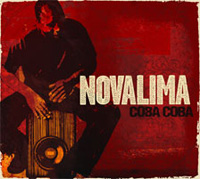
NOVALIMA
COBA COBA ( Cumbancha CD9)
As in other fields, world music survival is about being versatile and adapting. In 1995 David Byrne put his imprimatur on The Soul of Black Peru, prompting the first marketing push of Susana Baca. But a decade ago Afro-Peruvian music was still a fresh concept when Network Medien put out their Musica Negra series, culminating in the two-disc set Musica Negra in the Americas. Pepe Vasquez emerged as a major exponent of this type of music, and Novalima made a promising international debut on the Mr Bongo label in 2005. Now here they are again, on the neophyte Cumbancha label, and they return with a stronger sound. It's dubbier, there's more hints of Colombian electronica. Funnily enough the traditional Peru Negra stuff like "Africa Landó" (a reworking of "Ritmo del Negros"), is almost quaint by comparison to their more edgy experiments. But then "Kumana" has a heavy insistence like Afro Funk inhabits the cajon. There's salsa dura, soca, break beats and sampling! In short a smorgasbord of Afro-Latino sounds. It's solid. There is a hint of the Sidestepper album I loved so much in 2008, and that may be the result of the British studio production of Toni Economides (who has worked with Nitin Sawnhey, among others). The band has branched away from the pop sound of their earlier album into a denser more richly layered complex soundscape with ALL Latin styles under consideration. To pull it off without sounding like a hodge-podge is a real achievement.

JUANECO Y SU COMBO
MASTERS OF CHICHA 1 (Barbes Records BR0020)
This is a disc from one of the outstanding bands on the 2007 Roots of Chicha album. Four of the cuts on there were by Juaneco and now we get a whole disc (including those four over again). So do you need more psychedelic cumbia? It's up to you. The sound is great; the band kicks it up with their haunted "Riders on the Storm" organ, a cumbia bass that wont quit, and a bouncy psychedelic lead guitarist. The band was formed by Juan Wong Popolizio, a Chinese-Peruvian sax player. Juan's son Juaneco, an accordionist, took over in 1966. Juaneco recruited Noé Fachin, a virtuoso criollo guitarist in his 40s, to be main songwriter and lead guitarist. Though rock and roll was beginning to penetrate the Andes in its movement to global domination, the local radio played cumbia and Peruvian criollo standards. But they also caught Brasilian radio which broadcast carimbo, an African-influenced rhythm. Juaneco traded his accordion for a Farfisa. They adapted folklore and Noé was inspired by Hank B. Marvin of the Shadows and Nokie Edwards of the Ventures in his guitar work. Thus was born the Amazonian wave of pop music. The group was drawn to the local Shipibo indian lore, and while none of them was of Indian origin they dressed in the indians' costumes (perhaps as a gimmick) and indulged in ayahuasca, the hallucinogenic drug used by the shamans for self-knowledge. Sadly half the band was wiped out in a plane crash after a recording session in Lima. Forty years have passed since these sides were recorded so it is a bit quaint, but it is full of catchy hooks, and the musicianship is excellent.
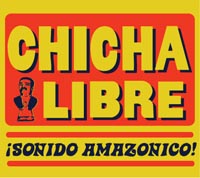
CHICHA LIBRE
SONIDO AMAZONICO! (Barbes Records BR0017)
Hot on the heels of The Roots of Chicha we get an outing from a singular outfit, Brooklyn-based Chicha Libre, who have mastered the style of psychedelic Amazonian cumbias which originated in Peru in the late 60s, complete with Electrovox (a cross between a Hohner organ and an accordion), Farfisa and Moog keyboards, guitars and percussion. It's the Surfaris with a Latin beat (though they occasionally sing in French). They kick off with a cover off Los Mirlos' "Sonido Amazonico" which was also the opening track on Roots, but then throw some of their own compositions into the mix and the results are wonderful. Like the originators, they create goofy cumbia versions of light classical music (check out "Für Elise" on Roots). Their take-offs on Ravel's "Pavane" and Eric Satie's "Gnossiènne (Little know-it-all)" are delightful. They cover Gershon Kingsley's (rather than James Brown's) mildy irritating Moog ditty "Popcorn." There's also some weird ambient noise thrown in for flavour. (The liner notes thank Oscar Noriega who was "electrocuted somewhere between tracks 12 and 13 on the streets of Veracruz." I hope he survived!) If you like daring contemporary bands like Los Amigos Invisibles, Dengue Fever, Nortec Collective, Chico Science's band Naçào Zumbi, Os Mutantes, or Ozomatli, you will love this. Indeed if you dug Roots this is an excellent sequel. It's decidedly postmodern music, and, like they suggest, "the pop debris of three continents."
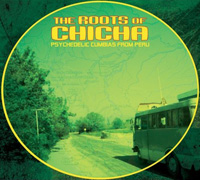
THE ROOTS OF CHICHA
PSYCHEDELIC CUMBIAS FROM PERU (Barbes Records)
There's a real buzz about this album, a compilation of psychedelic cumbias from the 60s. It's fun and repetitious at the same time. Listening to it all the way through is like chugging beer, you know you are getting intoxicated but having a great time and damn the consequences. Surprisingly the origin is Peru, a country not associated with the loping cumbia beat, found more often in the Northern hemisphere. Lots of warbly wah wah guitar, woops & other shagadelic effects, pentatonic Andean vocals & tricky drumming keep it loping along. Between 1966 and 1978 the music evolved in the shanty-towns of Lima as migrant workers from the oil-fields of the Amazon brought the instruments of Yanqui rock to the too-tired-to-dance cumbia and folktunes of home. Electric guitar and Farfisa replaced accordeon. There'd a far-horizon cowboy gaze of the Ennio Morricone type behind this sound. On the other hand, "Para Elisa" is a hot instrumental take on Beethoven's "For Elsie" (though the bridge goes somewhere else), also plucked from a wiry electric guitar. The brittle twiddly lead, reminiscent of Venetian mandolin as well as Surfaris' Stratocaster rock, dominates with very interesting & easy-to-follow vocals. A crude Moog is teased out on Los Mirlos' "Muchachitas del Oriente"-- totally gratuitous but probably considered hip at the time. The "ghost riders" bass redeems it. "Mi morena rebelde" sports what sounds like an electrified tres -- it's a banjo! More shagadelic woops herald "Si me quieres" by Los Hijos del Sol with fine bongo: a relatively straight cumbia. This is the first time this music has been released outside of Peru, and it is probably hard to find there. It is truly a delight.

NOVALIMA
AFRO (MR BONGO MRBCD041)
Afro-Peruvian music has really caught on since Susana Baca first broached the subject to our ears. It's the black music of Peru, handed down by former slaves for centuries. I don't recall seeing any black people when I toured Peru in 1979 and I only heard the "El Condor pasa" type of pan-pipe stuff that seems to crop up in many of the world's subway systems now. But it sounds more African than hybrids found in Brasil, Colombia or Haiti. Novalima have gone back to the traditional repertoire and added some simple programming to make it more palatable to younger audiences. Purists won't like this. Asphyxionados of house music will find the programming tame and simplistic. The sound is clean however, with bass added to the traditional acoustic guitar and rumba box or cajon (a lidded crate that is alternately slammed and slapped). There's congas and other percussion, and a guest trumpeter and occasional keyboard. "Zamba Malato" will be familiar not only from Susana Baca but Pepe Vasquez' excellent RITMO DE NEGROS. This album is ultimately more pop than traditional which is not a bad thing but its grounding in the Afro-Peruvian black music is the most interesting part and the pop sheen tends toward the vapid.
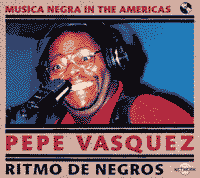
PEPE VASQUEZ
RITMO DE NEGROS (Network)
What keeps me interested in contemporary music is constantly challenging my assumptions about music and exploring new areas. Susana Baca opened up my ears to the music of Black Peru and now I learn that her best song, "No Valentin," was written by Pepe Vasquez. His first international release, RITMO DE NEGROS (on the excellent Network label from Frankfurt) is very much in the Afro-Caribbean vein and includes a few things that are familiar from Baca's performances. The Peruvian slaves were half a continent away from the Caribbean but of course had the same musical thread that connected them back to West Africa. The lando of Peru and Brazil has been traced back to the londu dance from Angola. When the Spanish outlawed traditional African instruments such as marimbas or drums with skin heads, the slaves improvised and used wooden crates and boxes that developed into the cajon. Another indigenous Peruvian instrument, the cajita, developed out of the collection box in Catholic churches. The player opens and slams the lid and also beats on it with a drumstick. The scraper is not a gourd, but the jawbone of an ass (quijada de burro) which buzzes as it is scraped.
There's a great sense of spontaneity but also tight interplay between the singer and musicians on this album. They really go to town on folk tunes like "Zamba Malato" (which Baca also performs), a mid-tempo ballad with a lot of space for rhythmic complexity. Vasquez is the leading singer and composer in Peru. Listening to this album it's easy to see why. The large band is uncredited but there's guitar, horns and keyboards as well as a host of percussion and the wonderful fluid vocals of Vasquez coasting on top.